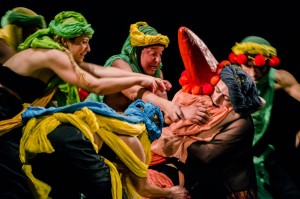the capital of Romania, abounds in cultural events that compete with each other in terms of audience, themes and content: design shows, music festivals, film festivals, theater festivals, cultural street events, themed cultural picnics and the city’s annual celebration. I could go on like this until I raise your curiosity to the level of having you present in Bucharest the same month next year.
??nd?ric? Animation Theater in cooperation with ASSITEJ Romania National Center have created in just a few days the most complex cultural event dedicated to the young audience. Also, these two institutions have celebrated together with the audience 70 years of ??nd?ric? and 50 of ASSITEJ.
This year, the 4th edition of THEATER, STREET and CHILD Festival lasted from the late days of spring until the first days of autumn. The festival has been present in parks, but the last days brought a number of events to ??nd?ric? Theater headquarters, situated in Lahovary Square, and also to the Itinerary Theater Hall: plays for children and young audience, play reading shows, exhibitions, debates, conferences, and a lot of meetings between the people who are writing at this moment the pages of history for children and young audience’s theater. This 4th edition of the festival reunited eight state members of ASSITEJ INTERNATIONAL: Austria, Croatia, Italy, Serbia, Romania, China, Republic of Korea and Japan. The themes opened for discussion were „Education through art”, „Animation Theater, where to?”, „How can you make a kid to believe in the theater movement?”, „Animation and visuality: the rich theater of the 21st century”, „Networking – the solution for efficient communication”, „Theater for children and young audience in Republic of Korea”, „Means of expression in the Chinese theater for children and young audience”, „Development trends in Japanese theater for children”. These meetings and these themes managed to build the appetite for conversation, dialogue, and finding each other’s interests between Romanian cultural managers and different international artists and guests. Also, in the same days (September 11-16), the second reunion of ASSITEJ Europe 8+ Regional Network took place. This reunion involved debates regarding the headlines of cultural area and making future plans in relation with the result of these debates. Of course, these debates are designed to build cultural bridges between our countries, by bringing our cultural specifics closer together and discovering and creating new and stronger relations between the cultures of this region. The main agenda of each representative from these eight countries, presented at the reunion, focused on intensifying the cultural cooperation between members, building new common cultural projects, developing new coproductions, creating residence opportunities for young artists, etc. It was also an opportunity for Romanian managers of children and young audience theaters to present their work, and to create new work relations with the international partners. Romanian artists, theater makers and festival managers had their chance to network with the international guests by promoting their creations, ideas or projects. THEATER, STREET and CHILD Festival has given an intense week of cultural experience, sometimes tiresome but pleasant, and very productive regarding concrete future plans.



